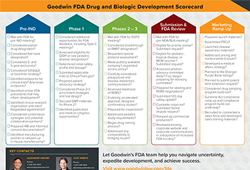Psychedelics & Drug Development — Key Considerations for Healthcare Industry and Life Sciences Companies as Congress Seeks to Tap Into Psychedelics’ Therapeutic Potential

Based on recent regulatory changes at the state and local level and the efforts by the federal government and certain foreign agencies, investors, clinical trial sponsors, life sciences companies, and investigators operating in the psychedelics industry may have reason to be optimistic about the future regulatory landscape for therapeutic psychedelic product candidate development, approval, and commercialization. The proposed Breakthrough Therapies Act is one such reason.
On March 8, 2023, US Sens. Cory Booker (D-NJ) and Rand Paul (R-KY) introduced an updated version of the Breakthrough Therapies Act. If passed, the bipartisan bill would amend the federal Controlled Substances Act (CSA) to enable the Drug Enforcement Administration (DEA) to reclassify from Schedule I to Schedule II drugs and biologics, including therapeutic psychedelics, that receive breakthrough therapy designation or are authorized for expanded access by the US Food and Drug Administration (FDA). Therapeutic psychedelics are Schedule I substances and include LSD, MDMA, and psilocybin. According to the bill’s sponsors, the “legislation [would] remove regulatory hurdles that inhibit research and compassionate use access to potentially lifesaving treatments that are heavily restricted by Schedule I of the [CSA].”
The bipartisan effort behind the Breakthrough Therapies Act signals the federal government’s evolving position on psychedelic substances, their therapeutic potential, and access. This evolution, discussed in greater detail in our Client Alert, presents an important opportunity for investors, clinical trial sponsors, life sciences companies, and investigators.
Accordingly, we have identified and answered 8 key questions that stakeholders should consider as they develop and innovate in the psychedelic space:
- What Is the Difference Between a Schedule I and a Schedule II Drug?
- What Diseases and Conditions Can Potentially Benefit From Therapeutic Psychedelics?
- What Are the Key Provisions of the Proposed Breakthrough Therapies Act?
- How Does a Drug or Biologic Obtain Breakthrough Therapy Designation From FDA?
- What Is Expanded Access?
- What Are Some Key Limitations in the Proposed Breakthrough Therapies Act?
- What Is the Status of Therapeutic Psychedelics at the State and Local Level?
- What Regulatory Changes Are on the Horizon for Therapeutic Psychedelics?
Read the full client alert here.

 As follow-up to our October
As follow-up to our October  In this post, we discuss FDA’s conduct of inspections of manufacturing facilities for new drugs and biologics during the COVID-19 pandemic. These inspections, known as pre-approval and pre-licensure inspections (PAIs/PLIs, respectively), are performed to give FDA assurance that a manufacturing site named in a new drug or biologics license application is capable of manufacturing the product according to current good manufacturing practices (cGMPs) and producing the product at commercial scale.
In this post, we discuss FDA’s conduct of inspections of manufacturing facilities for new drugs and biologics during the COVID-19 pandemic. These inspections, known as pre-approval and pre-licensure inspections (PAIs/PLIs, respectively), are performed to give FDA assurance that a manufacturing site named in a new drug or biologics license application is capable of manufacturing the product according to current good manufacturing practices (cGMPs) and producing the product at commercial scale.